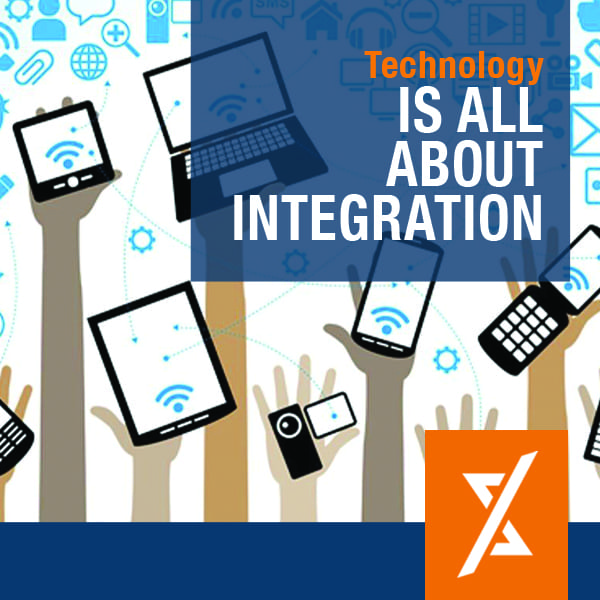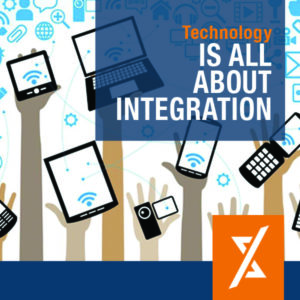Technology Advancements That are Reshaping the Dealership Experience

Posted November 30th, 2022 by Arnold Tijerina
Right now, there have been a ton of technology advancements that are shaping the customer experience and dealership experience on a day-to-day basis. It’s been nearly impossible for many dealers to keep up. Not only that, but right now, dealers have plenty of demand for business so they might not think that they need to bother with integrating new technology. That couldn’t be further from the truth.
There are even big companies that are struggling to keep up with technology, including those that you would expect to see on the forefront. For a comparison, look at how much digitization has been created in the lending industry. Brands like Capital One have done a great job of digitizing the front-end process and being able to analyze applications and provide decisions in a simple and straightforward manner. Powersports and the automotive industry could take notes from them when embracing their own (adopting new) technology.
Dealer Track
In the early 2000s, DealerTrack was brought to the table to serve as an electronic fax machine. It took the original fax machine out of the office and sent faxes straight into the dealer’s systems. What ended up happening is that they focused too much on the fax machine aspect of things and never bothered to look further for future innovations. The model of building out that one area to collect information and then put it into dealer’s systems directly, for a fee, didn’t last very long.
DealerTrack had traction for a short time because neither dealers nor consumers have the access to that type of digital interface. It also helped dealers eliminate fax machines and get more information into their systems faster than via manual entry. The platform had a good model, but it never evolved with the dealer or the consumer, so it ended up falling behind.
DealerTrack could be a good example of how to do things, but also how not to do things. It's important to find a way to keep up with the ever-changing demand at the speed that works for consumer and dealers.
Digitization Efforts Today
Now, you have tons of lenders that have front-end customer portals where people can input information and get decisions, manage accounts, and so much more. This whole process of customer application and approval takes a lot more money and time than it needs to when you’re not embracing the technology available. By taking the time to digitize the efforts, you will need fewer employees and less time to get information and decisions back to lenders and customers alike. And most of these consumer applications also get sent to the dealer – sometimes at buy rates that are lower giving the dealer the opportunity to make back-end profit while, at the same time, giving the customer a way to get an answer without going to the dealership. Oftentimes, the answer the customer is given is simply an “Approved” message while the dealership is given more information which will help them structure a deal that fits the approval.
Many dealers have held on to outdated technology because they didn’t have any better options. They didn’t know anything different or how to find other solutions. Today, though, it’s going to start feeling antiquated and more dealerships are going to recognize that they need updated technology that can measure up to the demands of the modern dealership.
Then COVID came along and taught everyone that they’re nowhere near where they think and nowhere near where they should be with digital retailing.
CRMs vs. Lead Management Tools
CRMs are another segment of technology. For a while, there was a lot of innovation, but now it seems to have reached a point where many are stagnant and not capable of delivering what dealers and consumers want today.


Lead management tools paved the way for full-on CRM platforms, evolving quickly at first but then falling off. Dealers were just getting to the point where they recognized that they needed better lead management. They saw that a dedicated process could improve their bottom line. And even when dealers realized the value, they might not have been ready for the full capabilities of a CRM tool.
Did technology move too fast for dealers? If so, what can dealers do to make sure that they’re utilizing the technology to its fullest extent now and in the future?
We call it a CRM, but it’s hardly used as that for many dealers. A lot simply see it as “this is how I have to answer Internet leads now” and that’s not going to work. It’s not just about Internet leads. Even though these are valuable leads, they need to be properly managed and cultivated. We also talk about all the rich data that we input within CRMs and yet not many dealers use it. Too often, dealers are employing a CRM tool that has great capabilities for customer relationship management, but they’re treating it like a lead management tool, at best.
You can see this in the low number of showroom visits that make it into the system, the almost nonexistent number of phone calls that make it into the system, and the nonexistent use of the system to speed the sales process along or to help the customer with the sales process. The CRM is a silo, but that’s not what CRMs are made for. It needs to be integrated into the rest of your tech stack and embraced for all that it can do.


